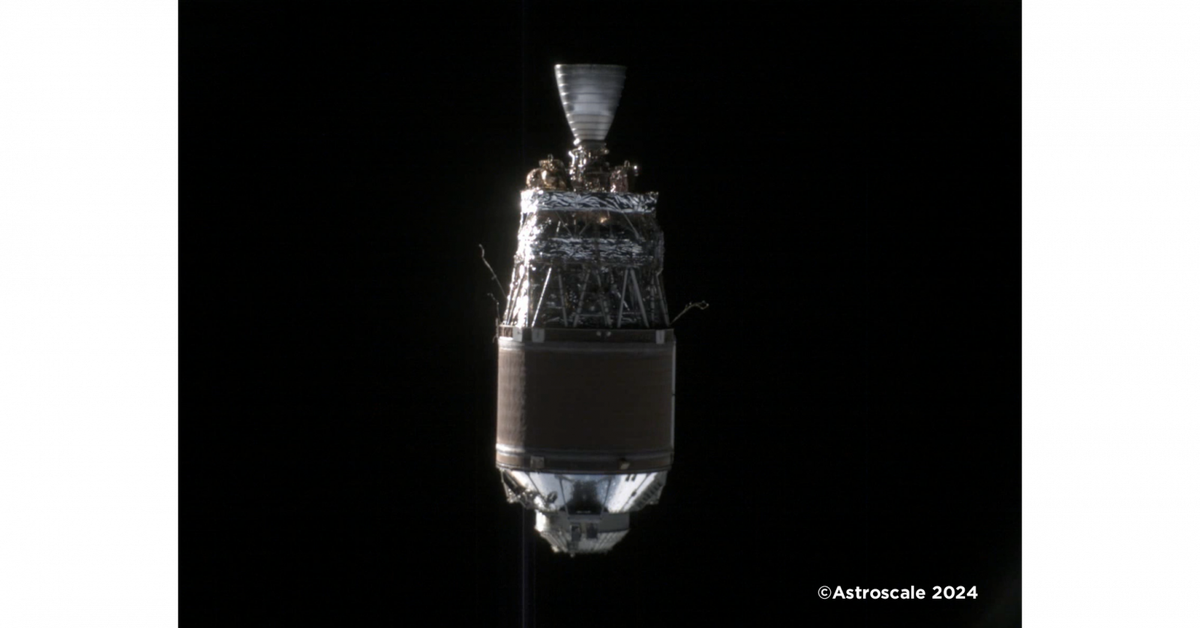Science
DJI’s first power stations can fast charge its drone batteries

DJI just launched its first power stations that feature a new proprietary SDC — aka Smart DC — port that can fast charge (some) DJI drone batteries and supports lots of input and output accessories. The $699 Power 1000 and smaller $379 Power 500 both offer a bevy of AC and DC inputs and outputs with more available if you’re willing to fully commit to living DJI’s SDC dongle life.
The Power 500 has one SDC Lite port, while the larger Power 1000 has both regular SDC and SDC Lite. Both power stations are fitted with batteries that use LFP chemistry, which is safer and lasts longer (80 percent capacity after 3000 cycles) than traditional NMC, and both offer a 0.02-second cutover making them suitable for use as a UPS on unstable grids. They arrive without an app, though, which is a common and useful way to manage power stations remotely.
The 1024Wh Power 1000 is the flagship offering. Besides the SDC and SDC Lite ports, its other notable feature is two USB-C ports that each support a max output (no input) of 140W so long as you’re using the right cable to connect a PD 3.1 USB-C device like a laptop. Its AC outputs can produce up to 2200W AC (2400W in Europe) which is enough to power any device you might take on a shoot or camping trip.
The power station itself can be fully charged in as little as 70 minutes at its max input of 1200W, or it can be dumbed down to 600W with a switch on the front that also reduces the fan noise to 23dB (which is very quiet for a power station). It weighs 13kg, or almost 29 pounds.
DJI tells me that there’s no real difference between how the bi-directional SDC and SDC Lite ports function right now. The current spec sheet lists the ports as follows:
DJI’s SDC ports support the company’s “Power SDC super-fast charge function,” which pulls as much as 230W for Metric 30 Series TB30 Intelligent Flight batteries, 200W for Inspire 3 TB51 Intelligent batteries, 150W for Mavic 3 Intelligent Flight batteries, and 125W for DJI Air 3 Intelligent Flight batteries, but only after you buy the $19 cable specific to each drone series.
Each SDC port can also be used to recharge the power station with up to 400W of solar panels, but only after you buy the $59 DJI Power Solar Panel Adapter Module (MPPT). That’s a unique approach, since those DC-to-DC converters are something you’d find standard inside a class of power stations commonly called solar generators. You can even plug two MPPTs into the Power 1000 for 800W of total input. DJI also lets you bolt these onto the side of the unit to go full Frankenstein.
DJI doesn’t make its own solar panels but it is reselling Zignes panels to help ensure you don’t screw things up by “overvolting” your setup.
And this is just the start. DJI tells me that in the future, the SDC ports might support higher power and capacity accessories through firmware upgrades.
The smaller 512Wh Power 500 dials things back with a pair of 100W USB-C ports that can also be used to charge the unit, unlike the Power 1000. It can be charged at 540W or 270W, and its AC max output is limited to 1000W. The Power 500 weighs just 7.3kg, or about 16 pounds.
I’m super curious to see how people respond to DJI’s adapter heavy and proprietary approach to power stations. I can see several pros if you own a compatible DJI drone, but lots of cons if you don’t.
Science
SpaceX’s Falcon 9 rockets are grounded after an in-flight failure

SpaceX’s Falcon 9 rocket experienced an engine failure after it launched late Thursday night from the Vandenberg Space Force Base in California. The mission, Starlink Group 9-3, was carrying Starlink satellites and failed to reignite its upper second stage after developing a leak. “Upper stage restart to raise perigee resulted in an engine RUD for reasons currently unknown,” Elon Musk said overnight, confirming that the engine experienced a “rapid unscheduled disassembly.”
Falcon 9’s second stage performed its first burn nominally, however a liquid oxygen leak developed on the second stage. After a planned relight of the upper stage engine to raise perigee – or the lowest point of orbit – the Merlin Vacuum engine experienced an anomaly and was unable to complete its second burn.
The company’s statement says it will do a full investigation into the incident in coordination with the Federal Aviation Administration (FAA), the company said on its website. The Falcon 9 has been grounded by the FAA pending the results of the investigation, reports CNBC.
On Friday afternoon, the company said it had made contact with 10 satellites of the 20 that had been onboard but noted that the satellites are “in an enormously high-drag environment with their perigee, or lowest point of their elliptical orbit.” The maximum available thrust is “unlikely to be enough to successfully raise the satellites,” SpaceX said, meaning that they will reenter the atmosphere and “fully demise.”
The satellites “do not pose a threat to other satellites in orbit or to public safety,” according to the company.
Science
This is how much hotter urban sprawl makes US cities feel

Nearly 34 million people across 65 US cities — roughly one in 10 Americans — live in a place where the built environment makes temperatures feel at least 8 degrees Fahrenheit hotter than it would without that urban sprawl. That’s according to a new study by the nonprofit Climate Central, which mapped the impact of a phenomenon called the urban heat island effect in major cities in the US.
Dark, paved surfaces with little greenery tend to absorb heat. Hot exhaust from heavy traffic and industrial facilities can also make certain neighborhoods warmer than others. That’s how the urban heat island effect can make a heatwave feel even worse for some communities. In the US, a history of segregation and redlining that resulted in chronic underinvestment in many neighborhoods of color also created heat islands in cities.
It’s a problem that often flies under the radar because a typical weather forecast for a city misses these hyperlocal nuances. To get a better picture of how heat impacts a city from neighborhood to neighborhood, Climate Central documented the urban heat island effect down to a more granular level.
“When you look across the country, this is everywhere.”
“When you look across the country, this is everywhere. This is not a big city problem. This is a big development problem. And that can happen anywhere,” says Climate Central senior data analyst and research manager Jennifer Brady.
Brady and her team scrutinized 37,094 census block groups in the US. A single block group might be home to between 600 to 3,000 residents, an even smaller range than a census tract. “The finer and finer detail you can get, the more accurate the estimates are going to be because what we’re looking at are land cover type,” Brady says.
They compared maps of those census block groups with an existing National Land Cover Database to assess what the makeup of the neighborhood was — whether it was crowded with tall or low-rise buildings or any tree cover.
They used methods previously published in the journal Scientific Reports to estimate how much those factors might warm or cool a neighborhood. That allowed them to calculate an urban heat island (UHI) index for each block group, a measure of how much hotter these areas are because of what the built environment looks like.
The average per capita UHI index for all the locations studied was 8 degrees Fahrenheit, but some places can feel even hotter. You can explore Climate Central’s interactive map online to see how this plays out nationally and at the census block group level in each city.
In New York City, for instance, the per capita average UHI index reached 9.7 degrees — meaning the way many neighborhoods were built makes them feel close to 10 degrees hotter than they would without the same urban sprawl. NYC’s main weather observation station happens to be located in Central Park, where tree cover and greenery can have a cooling effect in comparison. In 2021, The Verge explored New York City with thermal cameras and similarly found big differences in temperatures from neighborhood to neighborhood.
The good news is that we know how to undo the urban heat island effect. Simple measures like painting rooftops and other surfaces lighter colors, planting trees, and greening roofs can all help neighborhoods cool down. That can make an even bigger difference in the future as climate change makes heatwaves more frequent and intense.
“It’s very easy to go out and say, ‘Oh, this area’s hotter.’ But I think the logic behind this is very explicitly: why is it hotter?” Brady says. “I think then that leads to your solution.”
Science
Getting up close and personal with space junk

We’re getting a close look at some of the space junk that’s floating in space thanks to Tokyo-based company Astroscale Japan. New images taken from a distance of just 50 meters, show the discarded upper stage of a Japanese H-2A rocket that’s currently trapped in Earth’s orbit. They were taken by Astroscale’s Active Debris Removal (ADRAS-J) satellite following the spacecraft’s first fly-around observation of the debris.
ADRAS-J was launched on February 18th with the goal of collecting observational data that can be used to eventually remove large-scale space junk from orbit. The satellite has been monitoring the rocket’s upper stage for several months. The images were released after a test of the craft’s autonomous collision avoidance system designed to allow ADRAS-J to safely approach debris at close distances.
Photographs taken during the fly-around maneuver give us the closest look at the discarded H-2A upper stage rocket body since it was used to launch the GOSAT Earth-observation satellite in 2009. The object, seen floating above the Earth, weighs approximately 3 tons, and measures at around 11 meters (around 36 feet) long and 4 meters (around 13 feet) in diameter – a smidge smaller than an average city bus.
Astroscale says ADRAS-J successfully maintained a distance of approximately 50 meters (about 164 feet) during the fly-around, before an “unexpected attitude anomaly” triggered an autonomous abort after completing around one-third of the maneuver. ADRAS-J then moved away from the debris as intended and “remains in good health” according to Astroscale. The anomaly has since been identified, and Astroscale engineers are now preparing to approach the discarded upper stage again.
Phase two of Astroscale’s ADRAS-J mission, which aims to actually capture and deorbit some large space junk, is scheduled to begin no earlier than 2026.
-

 Startup Stories9 months ago
Startup Stories9 months agoWhy Millennials, GenZs Are Riding The Investment Tech Wave In India
-

 Startup Stories9 months ago
Startup Stories9 months agoStartups That Caught Our Eyes In September 2023
-

 Startup Stories10 months ago
Startup Stories10 months agoHow Raaho Is Using Tech To Transform India’s Fragmented Commercial Trucking
-

 Startup Stories8 months ago
Startup Stories8 months agoMeet The 10 Indian Startup Gems In The Indian Jewellery Industry’s Crown
-

 Crptocurrency4 months ago
Crptocurrency4 months agoLither is Making Crypto Safe, Fun, and Profitable for Everyone!
-

 Startup Stories9 months ago
Startup Stories9 months agoHow Volt Money Is Unlocking The Value Of Mutual Funds With Secured Lending
-

 E-commerce9 months ago
E-commerce9 months agoTop Online Couponing Trends To Watch Out For In 2016
-

 Startup Stories9 months ago
Startup Stories9 months agoWhy Moscow-Based Kladana Considers Indian SME Sector As The Next Big Market For Cloud Computing



